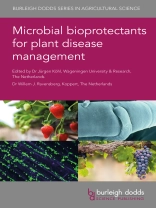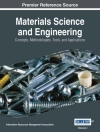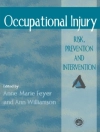- A comprehensive review of the recent developments in microbial bioprotectants
- Covers key classifications of bioprotectants: bacterial (e.g. Bacillus spp.), fungal (e.g. Trichoderma spp.), and viral (e.g. bacteriophages)
- Discusses the general issues that arise with the use of key bioprotectants throughout agriculture (e.g. risk of development of resistance against bioprotectants)
Tabella dei contenuti
Part 1 Product development of microbials
1.Advances in understanding modes of action of microbial bioprotectants: Gabriele Berg, Graz University of Technology and Austrian Centre of Industrial Biotechnology, Austria; Peter Kusstatscher, Franz Stocker and Ahmed Abdelfattah, Graz University of Technology, Austria; and Tomislav Cernava, Graz University of Technology and Austrian Centre of Industrial Biotechnology, Austria;
2.Advances in screening approaches for the development of microbial bioprotectants to control plant diseases: Wagner Bettiol, Embrapa (Brazilian Agricultural Research Corporation), Brazil; Flávio Henrique Vasconcelos de Medeiros, Universidade Federal de Lavras, Brazil; Josiane Barros Chiaramonte, Vittia Fertilizantes e Biológicos SA, Brazil; and Rodrigo Mendes, Embrapa (Brazilian Agricultural Research Corporation), Brazil;
3.Visualising plant colonisation by beneficial bacteria: a key step to improve the understanding of plant–microbe interactions: Stéphane Compant, Günter Brader and Angela Sessitsch, AIT Austrian Institute of Technology Gmb H, Austria;
4.Durability of efficacy of microbial bioprotectants against plant diseases: Marc Bardin, Thomas Pressecq and Philippe C. Nicot, INRAE, Pathologie Végétale, Avignon, France; and Yousra Bouaoud, University of Bejaia, Algeria;
5.Advances in production and formulation of commercial microbial bioprotectant products: Jacob Eyal, Michael Dimock, and José João Carvalho, Certis USA LLC, USA;
6.Key issues in the regulation of microbial bioprotectants in the European Union: challenges and solutions to achieve more sustainable crop protection: Rüdiger Hauschild, APIS Applied Insect Science Gmb H, Germany; and Willem J. Ravensberg, Koppert Biological Systems, The Netherlands;
7.Microbial bioprotectants and the marketplace: Mark C. Trimmer, Dunham Trimmer LLC, USA;
Part 2 Biological control agents
8.The use of Bacillus spp. as bacterial biocontrol agents to control plant diseases: Adrien Anckaert, Anthony Arguelles Arias and Grégory Hoff, Gembloux Agro-Bio Tech, ULiege (University of Liège), Belgium; Maryline Calonne-Salmon and Stéphane Declerck, UCLouvain (University of Louvain-la-Neuve), Belgium; and Marc Ongena, Gembloux Agro-Bio Tech, ULiege (University of Liège), Belgium;
9.The use of Pseudomonas spp. as bacterial biocontrol agents to control plant diseases: Monica Hӧfte, Ghent University, Belgium;
10.Are there bacterial bioprotectants besides Bacillus and Pseudomonas species?: Emilio Montesinos and Anna Bonaterra, Institute of Food and Agricultural Technology, University of Girona, Spain;
11.The use of Trichoderma spp. to control plant diseases: Enrique Monte and Rosa Hermosa, Spanish-Portuguese Institute for Agricultural Research (CIALE) – University of Salamanca, Spain;
12.Clonostachys rosea to control plant diseases: Dan Funck Jensen and Mukesh Dubey, Swedish University of Agricultural Sciences, Sweden; Birgit Jensen, University of Copenhagen, Denmark; and Magnus Karlsson, Swedish University of Agricultural Sciences, Sweden;
13.Bacteriophages to control plant diseases: Manoj Choudhary and Mathews Paret, University of Florida and North Florida Research and Education Center, IFAS, University of Florida, USA; Aleksa Obradović, University of Belgrade, Serbia; Katarina Gašić, Institute for Plant Protection and Environment, Serbia; and Jeffrey B. Jones, University of Florida, USA;
14.The use of mild viruses for control of plant pathogenic viruses: Nelia Ortega-Parra, De Ceuster Meststoffen BV (DCM) and Wageningen University & Research, The Netherlands; Zafeiro Zisi, Scientia Terrae Research Institute VZW and Katholieke Universiteit Leuven, Belgium; and Inge M. Hanssen, De Ceuster Meststoffen NV (DCM), Belgium;
15.Biocontrol via mycoviruses, a neglected option for bioprotection?: Anne D. van Diepeningen, BU Biointeractions and Plant Health, Wageningen University and Research, The Netherlands;
Part 3 Examples of use of microbial bioprotectants
16.Development and scale-up of bioprotectants to keep staple foods safe from aflatoxin contamination in Africa: Ranajit Bandyopadhyay, Alejandro Ortega-Beltran, Matieyedou Konlambigue, Lawrence Kaptoge and Titilayo D. O. Falade, International Institute of Tropical Agriculture, Nigeria; and Peter J. Cotty, Ocean University of China, China;
17.Using Verticillium albo-atrum WCS850 to control Dutch elm disease: Joeke Postma, Wageningen University & Research, The Netherlands;
Part 4 Future outlook on microbial bioprotectants
18.The role of bioprotectants for disease control in integrated crop protection approaches: Jürgen Köhl, Wageningen University & Research, The Netherlands;
19.Future outlook on microbial bioprotectants in agriculture: Willem J. Ravensberg, Koppert Biological Systems, The Netherlands;
Circa l’autore
Dr Rüdiger Hauschild is a Biologist at Applied Insect Science (APIS), Germany and specialises in molecular plant physiology, plant pathology, nematology and applied biocontrol research. He has been involved in more than 60 dossier submissions for microorganisms, botanicals and semiochemicals in the EU, and was involved in several EU research and policy initiatives, including the REBECA, Pro Larix and BIOCOMES projects and EU Commission and OECD working groups.












